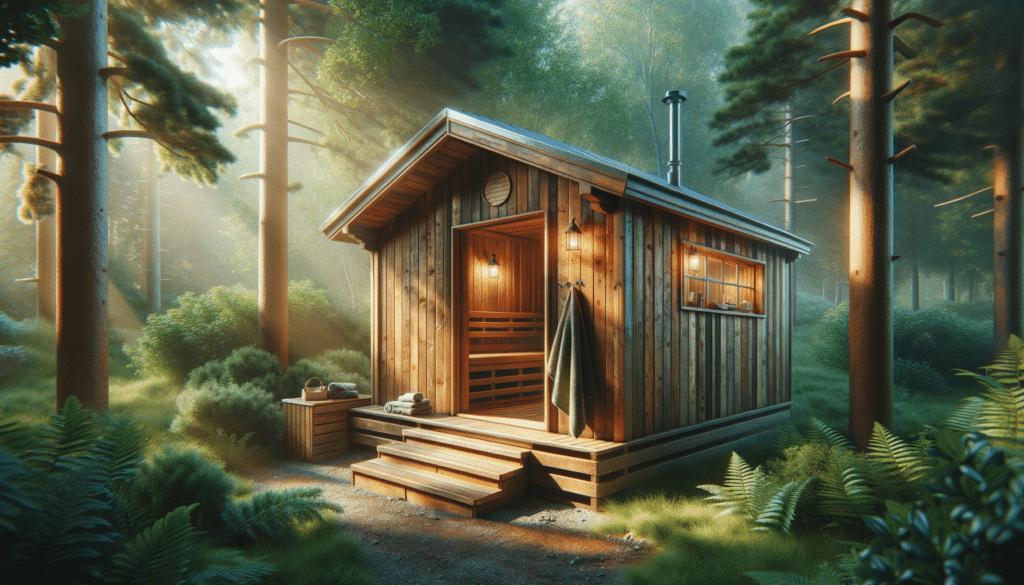Understanding Outdoor Sauna Costs
When considering adding an outdoor sauna to your home, understanding the financial investment is crucial. The cost of outdoor saunas can vary significantly based on several factors, including the type of sauna, materials used, and additional features. Typically, the price range for outdoor saunas starts from a few thousand dollars and can extend to tens of thousands for high-end models.
Several key factors influence the cost:
- Type of Sauna: Traditional saunas, which use heated stones, tend to be more expensive than infrared saunas, which use infrared heaters to emit radiant heat.
- Materials: The choice of wood, such as cedar or spruce, can affect the price. Cedar is often preferred for its durability and resistance to moisture.
- Size and Capacity: Larger saunas with more seating capacity will naturally cost more.
- Features: Additional features like sound systems, LED lighting, and advanced control panels can increase the overall cost.
While the initial investment might seem substantial, the long-term benefits of relaxation and health improvements can outweigh the costs. For those on a budget, DIY sauna kits offer a more affordable option, allowing homeowners to build their own saunas with pre-cut materials and instructions.
Traditional vs. Infrared Saunas: A Comparative Analysis
Choosing between a traditional and an infrared sauna can be challenging, as both offer unique benefits. Traditional saunas operate by heating the air around you, typically reaching temperatures between 150 and 195 degrees Fahrenheit. This type of sauna is renowned for its intense heat and steam, providing a classic sauna experience.
On the other hand, infrared saunas use infrared heaters to emit radiant heat, which is absorbed directly by the body. These saunas operate at lower temperatures, usually between 120 and 140 degrees Fahrenheit, making them more accessible to those who find the intense heat of traditional saunas uncomfortable.
Key differences include:
- Heat Source: Traditional saunas use heated stones and water to create steam, while infrared saunas use infrared heaters.
- Temperature: Infrared saunas operate at lower temperatures, providing a gentler experience.
- Installation: Infrared saunas are often easier to install and require less maintenance.
- Health Benefits: Both types offer health benefits, including relaxation, improved circulation, and detoxification. However, infrared saunas are often praised for their ability to penetrate deeper into the skin, potentially enhancing detoxification.
Ultimately, the choice between traditional and infrared saunas depends on personal preference and health considerations. Those seeking a more intense, traditional experience may prefer the classic steam sauna, while individuals looking for a milder, more accessible option might opt for infrared.
Creating Your Perfect Backyard Retreat
Transforming your backyard into a personal wellness retreat with an outdoor sauna can be a rewarding endeavor. When planning your setup, several factors should be considered to ensure a harmonious blend with your outdoor space.
First, consider the location. Choose a spot that offers privacy and tranquility, away from the hustle and bustle of daily life. Ensure the area is level and has proper drainage to prevent water accumulation around the sauna.
Next, think about the design and aesthetics. Your sauna should complement the existing landscape and architecture of your home. Opt for natural materials that blend seamlessly with the environment, such as wooden cladding and stone pathways.
Additional considerations include:
- Accessibility: Ensure easy access to the sauna, possibly incorporating a pathway or stepping stones.
- Utilities: Plan for electrical and water connections if needed, particularly for saunas with advanced features.
- Outdoor Features: Enhance your retreat with outdoor showers, seating areas, or a fire pit for a complete spa-like experience.
By thoughtfully planning your outdoor sauna setup, you can create a serene space that not only enhances your home’s value but also provides a peaceful haven for relaxation and rejuvenation.


